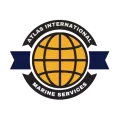Anchoring Excellence: The Role of Maritime Organizations and Associations in Promoting Industry Standards

Welcome aboard to our blog, where we set sail on a journey to explore the crucial role of maritime organizations and associations in promoting industry standards.
In this article, we will delve into the importance of these organizations, highlight their key responsibilities, and showcase the positive impact they have on the maritime industry.
So, grab your compass and join us as we navigate through the depths of professional excellence!
The Power of Collaboration
Maritime organizations and associations are instrumental in fostering collaboration among industry stakeholders.
These entities bring together shipowners, operators, port authorities, regulatory bodies, and other industry players.
By facilitating open dialogue and cooperation, they create a platform for sharing knowledge, best practices, and innovative solutions.
This collaboration is essential for setting and upholding industry standards.
Setting the Course: Developing Standards and Guidelines
One of the primary roles of maritime organizations and associations is to develop and establish industry standards and guidelines.
These standards cover a wide range of areas, including safety, security, environmental protection, crew welfare, and efficient operations.
By defining these benchmarks, they ensure uniformity and consistency across the industry, promoting a level playing field for all stakeholders.
Advocacy and Influence
Maritime organizations and associations act as advocates for the industry, representing the interests of their members at various levels.
They engage with governments, regulatory bodies, and international organizations to shape policies and regulations that are favorable to the maritime sector.
Through their collective voice, they can influence decision-making processes and promote positive change.
Knowledge Sharing and Capacity Building
Education and knowledge sharing are vital aspects of promoting industry standards.
Maritime organizations and associations play a crucial role in organizing workshops, seminars, conferences, and training programs.
These initiatives provide opportunities for professionals to enhance their skills, exchange ideas, and stay updated with the latest industry developments.
By investing in capacity building, these organizations contribute to a highly skilled and competent workforce.
Recognizing Excellence: Awards and Certifications
To encourage a culture of excellence and recognize outstanding achievements, maritime organizations and associations often establish awards and certification programs.
These accolades celebrate innovation, sustainability, safety, and exceptional performance.
By acknowledging and honoring exceptional individuals, organizations, and initiatives, they inspire others to strive for excellence and raise industry standards.
Final Thoughts
Maritime organizations and associations serve as beacons of industry excellence, guiding the maritime sector towards higher standards and continuous improvement.
Through collaboration, advocacy, knowledge sharing, and recognition, these entities ensure that the industry operates in a safe, sustainable, and efficient manner.
Their efforts contribute to the growth and success of the maritime industry, fostering a positive and thriving environment for all stakeholders.
Let’s salute the role played by these organizations in anchoring excellence and steering the course towards a brighter future for the maritime industry.
Found this article interesting, and useful? Please feel free to interact, recommend and share.
If you have any questions about this topic or would like to discuss your own business needs, please contact us today!









